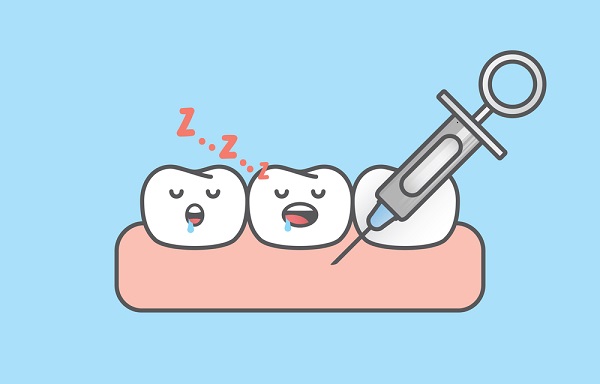Dental work doesn’t have to be uncomfortable today. Advances in anesthetics and sedation have made dental work easier than ever in the past. However, it can be confusing to understand all the anesthetics available and what each of them is used for. This blog will delve into the most common options and why your dentist might choose to use each.
Local Anesthesia

Local anesthesia includes drugs like bupivacaine, mepivacaine, prilocaine, articaine, and lidocaine. This type of anesthetic is often used for routine procedures, such as crown work, cavities, and root planning and scaling. The drug has a numbing effect that can last around 30 minutes to an hour.
General Anesthesia
Unlike local anesthetic, general anesthesia impacts the entire body and puts the patient to sleep. It’s mostly used for extensive, lengthy oral surgeries that could be more painful and require stronger medications than possible with local anesthesia. In addition, it ensures the patient remains entirely still during procedures that require precision.
Nitrous Oxide Sedation
Sometimes called laughing gas, nitrous oxide is a simple and quick method of sedation. The patient inhales a mixture of nitrous oxide and oxygen through a mask and the balance of each is controlled by the dentist to ensure a safe combination that creates the best results. This is a mild form of sedation that wears off when you stop inhaling it.
This form of sedation works well for young patients and those who need a mild sedative at the start of a routine procedure. Unlike stronger forms of sedation, nitrous oxide doesn’t last as long, has less extreme results, and means you can often drive yourself home after a procedure is complete.
IV Sedation
IV sedation is similar to nitrous oxide but it works much faster. Since it’s introduced to the bloodstream, the sedation is deeper and most patients will experience no pain or discomfort during a dental procedure. Dentists are careful when providing IV sedation to ensure you get just the right amount. You’ll be monitored throughout the process and the amount of sedation may be adjusted as needed.
This form of sedation is deeper and stronger, so it does require the patient to have someone to care for them and drive them home after the dental procedure is complete. It’s often used for more serious procedures that require a large amount of sedation to prevent pain.
Final Thoughts
Are you looking for a dentist in Denver? Spectrum Dental is here to ensure you have a smile you can be proud of. We offer same-day dentistry, emergency appointments, and advanced dental technology like 2D and 3D imagery, digital x-rays, and more. If you need an experienced dentist, reach out to us today to set an appointment.







